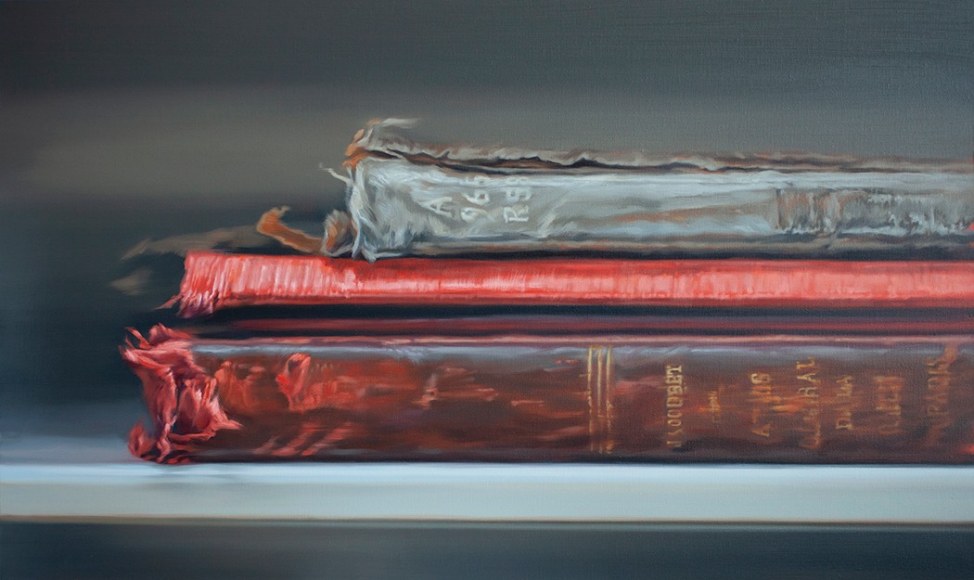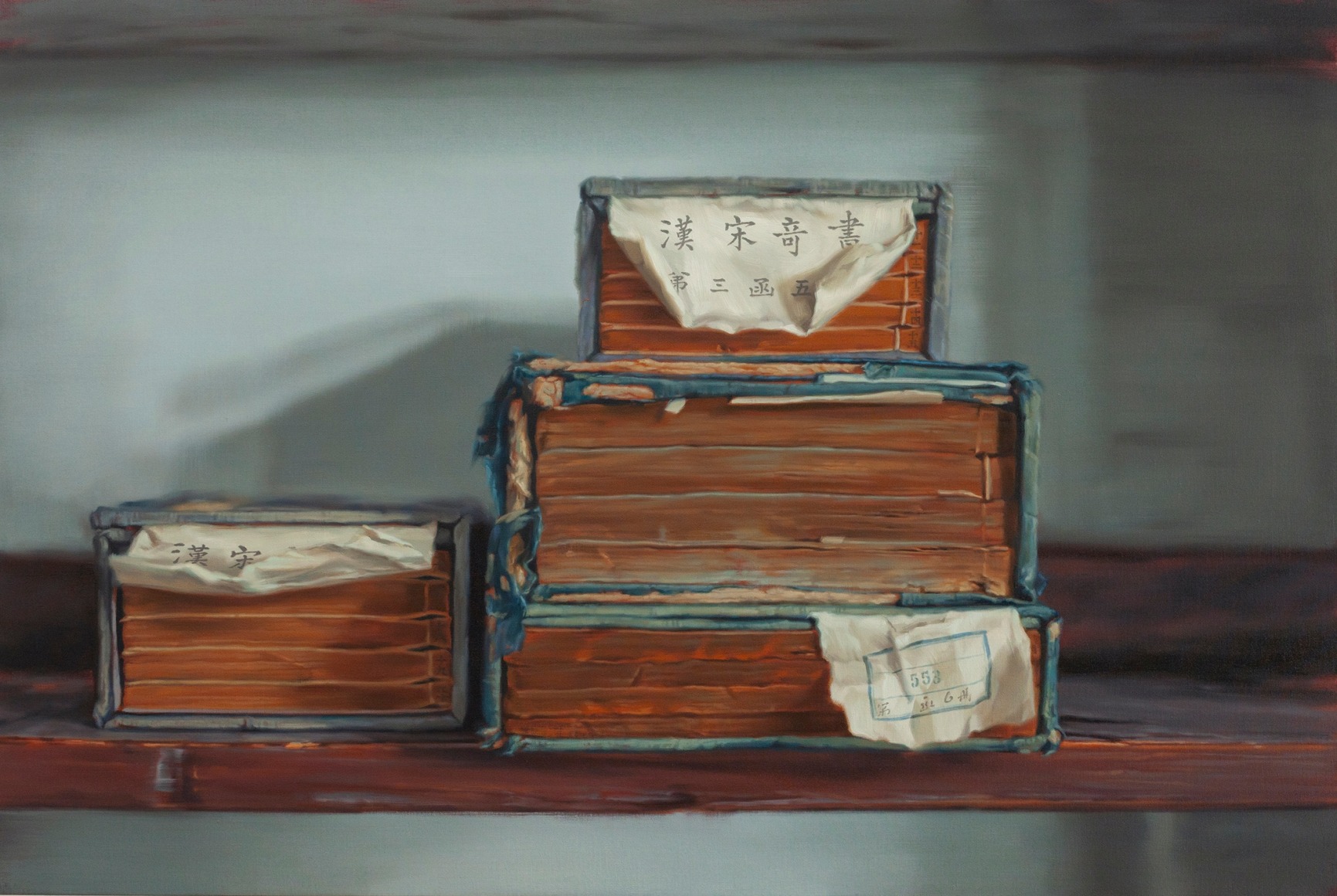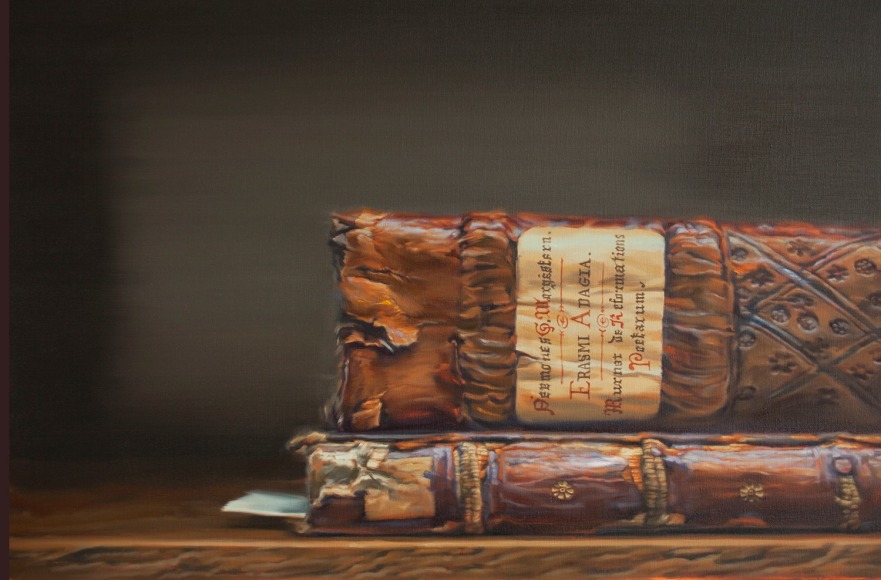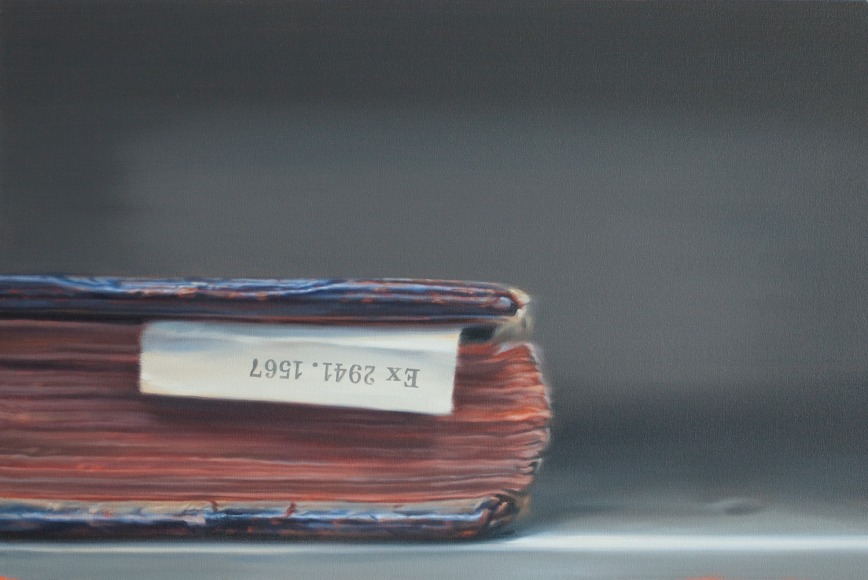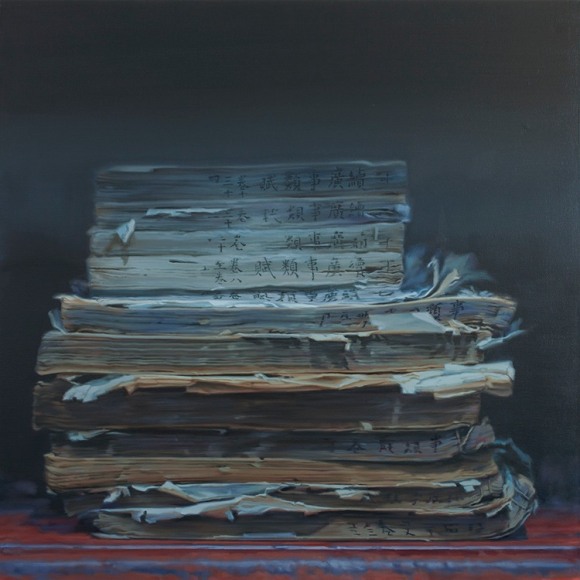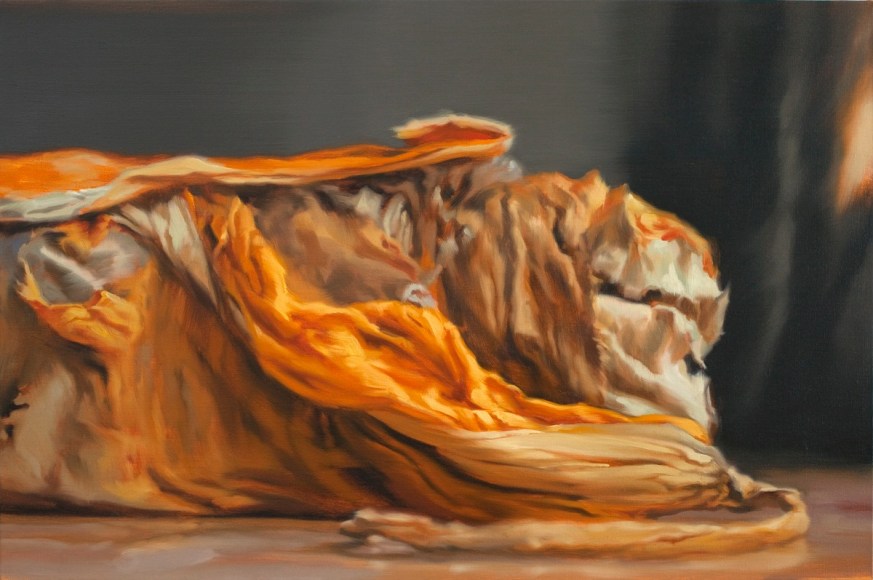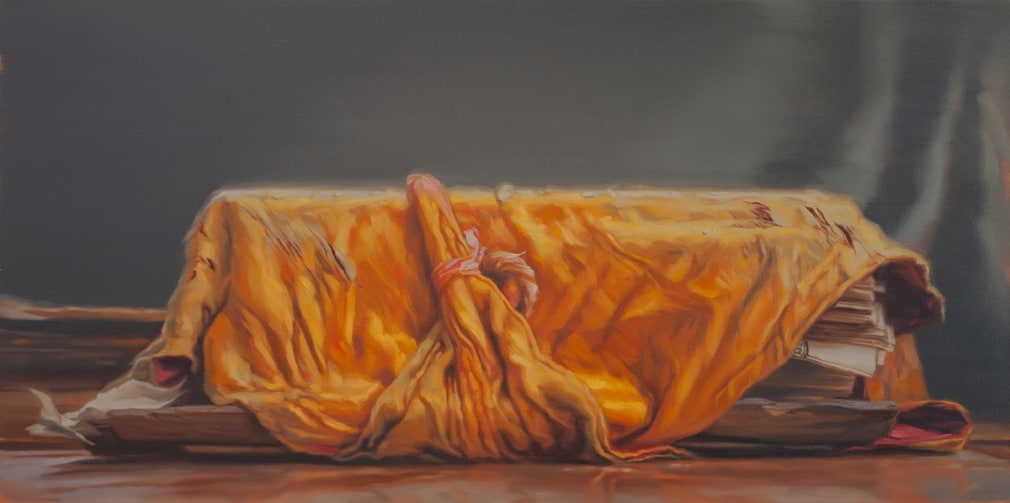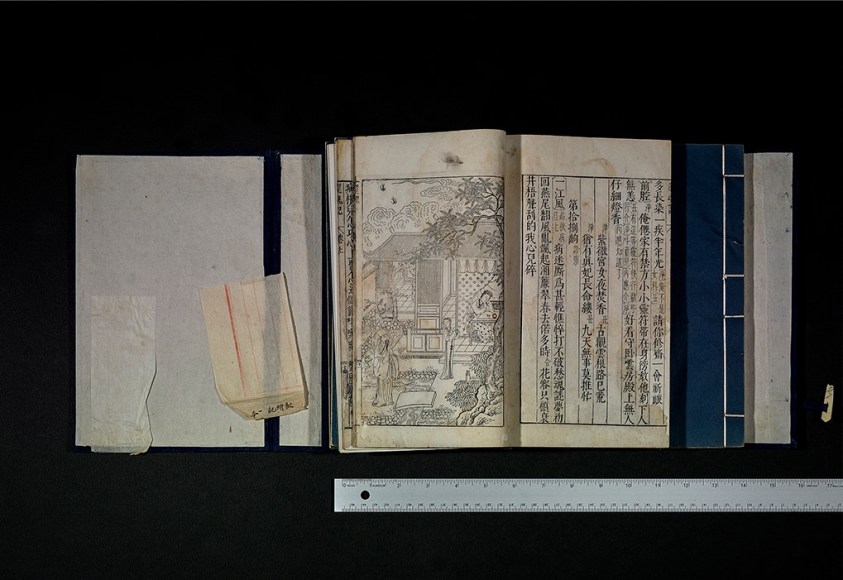Chambers Fine Art is pleased to present a solo exhibition of recent works by the artist Xiaoze Xie. Born in Guangdong, China in 1966, Xiaoze Xie graduated from Tsinghua University and the Central Academy of Arts and Design, Beijing before moving to the United States and settling in Texas where he continued his studies in a very different environment. He is currently the Paul & Phyllis Wattis Professor in Art in the Department of Art & Art History at Stanford University.
As a realist painter by vocation, early in his career Xie found a way to combine his passionate interest in Chinese history and current world events with more formal concerns by focusing on the materials stored in archives and library stacks as the subject matter of his paintings. During his career he has approached this subject in many different ways, but it is paintings of libraries with which he is most closely associated.
Unlike the German photographer Candida Höfer whose photographs of famous libraries concentrate on the splendid architectural surroundings created to house collections of books, Xie focuses on telling details, only rarely revealing the name of an author or title of a volume. A great deal is revealed, however, as he lingers on decaying bindings or more serious damage caused by historical events. In the 20th century Chinese libraries have suffered more than most, a fact treated with particular poignance in Xie’s Chinese Library series. The frayed pages of these Chinese books and manuscripts attest to the long history of suffering caused by global conflicts in the twentieth century. Ancient leather and vellum bound volumes depicted in recent paintings from his Library (Western) Series have also endured many centuries of turmoil and are often in a precarious state of preservation but they are now treasured and preserved in scholarly libraries.
Accompanying the paintings will be an installation of photographs that are part of Xie’s longstanding investigation into banned books. Xie scoured library catalogs in China to unearth old books that contained information deemed “dangerous” by various dynasties and rulers. Themes related to sexual pleasure, filial betrayal, political insurrection, and maps or descriptions of certain terrains were often censored, and the imperial class restricted general access to these books, allowing only certain elite citizens to see them. Censorship is, of course, not unique to China; in the past three years in the United States, books ranging from the Bible to novels by Nobel laureate Toni Morrison have been challenged, according to the Office for Intellectual Freedom, part of the American Library Association.
As an artist, Xie is also a cultural historian, deeply aware of what he refers to as “the vulnerability of culture, memory, and history” and the seeming decline of printed matter today. His experiences as a graduate student following the Tiananmen Square protests of 1989 became the impetus for his focus on banned books, and his photographs address the censorship of media he witnessed in China. In his paintings, the somber tonality and large scale endows the volumes with a singular gravitas. He achieves a remarkable balance between detailed recording of the appearance of his inanimate subject matter – books and manuscripts – and an increasing delight in fluid brushwork and painterly effects that often verge on abstraction.

